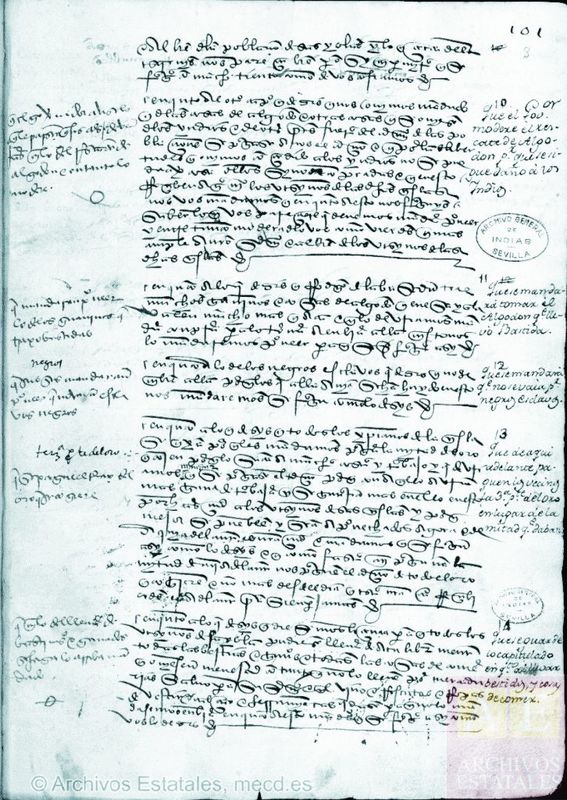The beginning of slave resistance in the Americas (1503)

TRANSCRIPTION
_____________________________________________________
_____________________________________________________
ENGLISH TRANSLATION
__________________________________________________________________________________________
__________________________________________________________________________________________
Commentary
By the spring of 1503, the enslaved Blacks who had arrived in La Española and been forced to work in the new colony were already seizing opportunities to escape enslavement by running away, thus inaugurating a practice that would continue for as long as Black slavery was implemented in the Americas during the next three centuries.
The eagerness by the Black Africans to gain freedom and the very limited population of European settlers, their enslavers in La Española, probably explains the early successful escapes by Blacks into the wilderness of the island.
It is clear from the Kings’ document that for many of the Black Africans who arrived in La Española after becoming the first victims of the infamous Transatlantic Slave Trade, the thirst for freedom made the risks associated with escape worth taking
 Sixteenth-Century La Española: Glimpses of the First Blacks in the Early Colonial Americas
Sixteenth-Century La Española: Glimpses of the First Blacks in the Early Colonial Americas 